
Recap: I go to my local graveyard to clean up overgrown graves.
Link: I fought the nature
.
I’m really loving my graveyard adventures, so I wanted to share a little more. I wanted to share the things I’d found in the graveyard, as well as the history and science of old graveyards.
I made this post to do that.

I don’t restore gravestones. I am not advocating to restore gravestones without training and permission. I am professionally trained in garden maintenance, and therefore, I restore gardens.
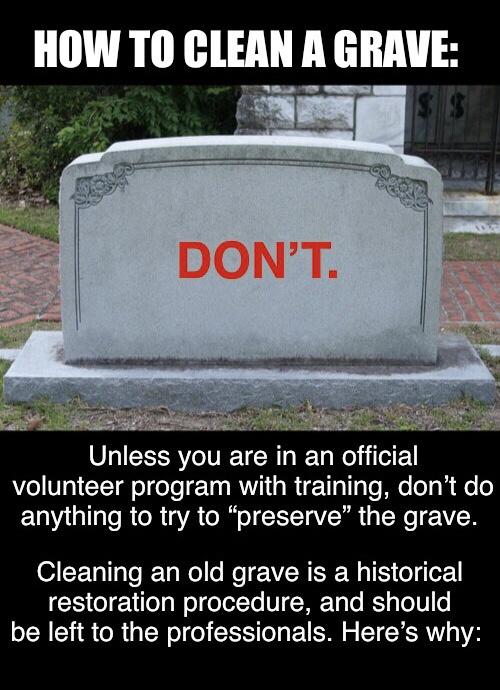
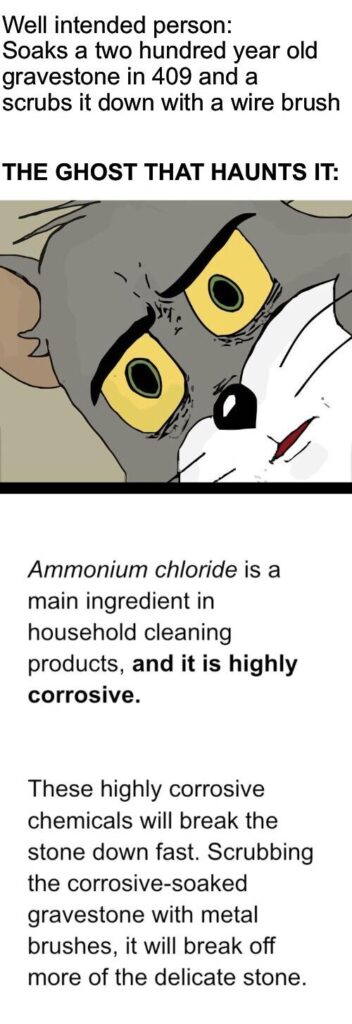
You might **think** it looks better when it’s scrubbed down, but it’s been made weaker – which ruins its historical preservation.

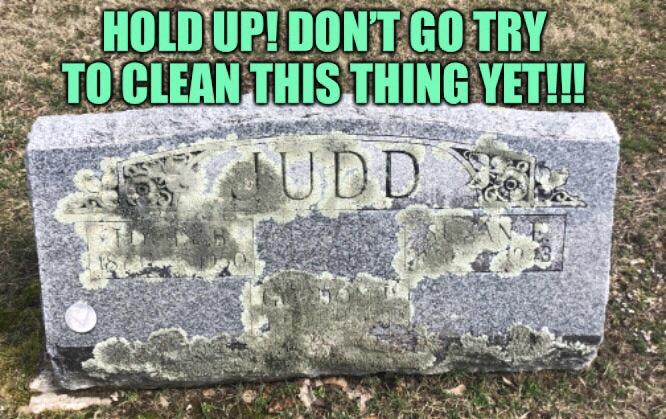
HOLD UP!! HOLD UP!! HOLD UP!!
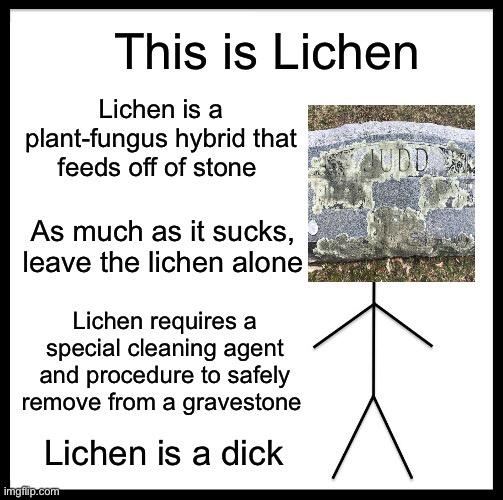
Keep in mind that this is an overly simplified version of biology.
Because the lichen are munching on the stone, they basically have their little fungal/algae teeth sunk into it.
Try to imagine putting a piece of steak in your mouth and clenching down on it. When someone tries to pry the steak from your teeth, it tears. This is what will happen if you try to brush lichen off of a stone.
You won’t SEE the damage, but it’s there, and it will weaken the stone (which is not good for historical preservation).
You can read more about lichen here!
Link: https://lisbdnet.com/how-does-lichen-break-down-rock/
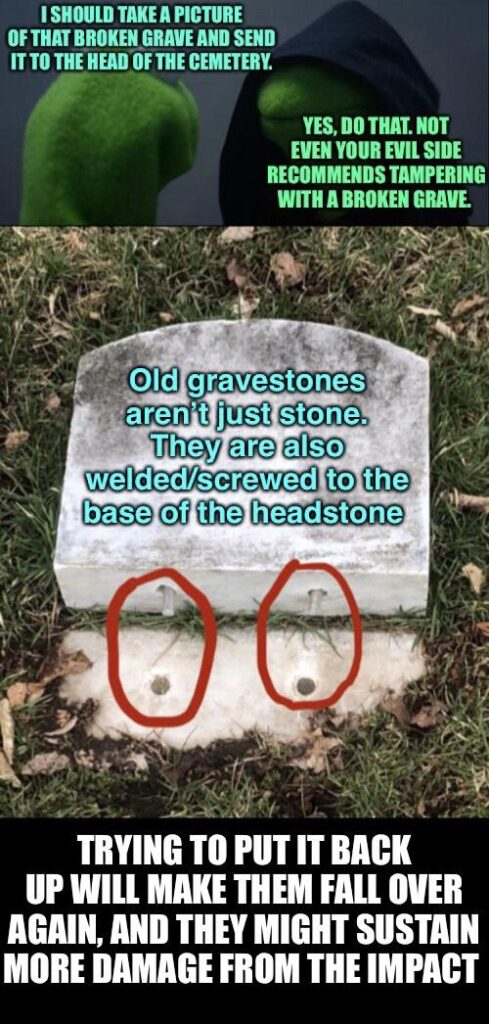
Think of it like this:
Your unprotected smart phone falls onto the floor. It cracks. The more it falls onto the ground, the bigger those cracks will grow, and pieces of the screen might come off entirely.
An old and heavy gravestone isn’t going to sit upright until it’s re-welded onto it. The more you try to prop it up, the more it will fall down, and like a smartphone, any other cracks and damage it has sustained are going to get bigger.
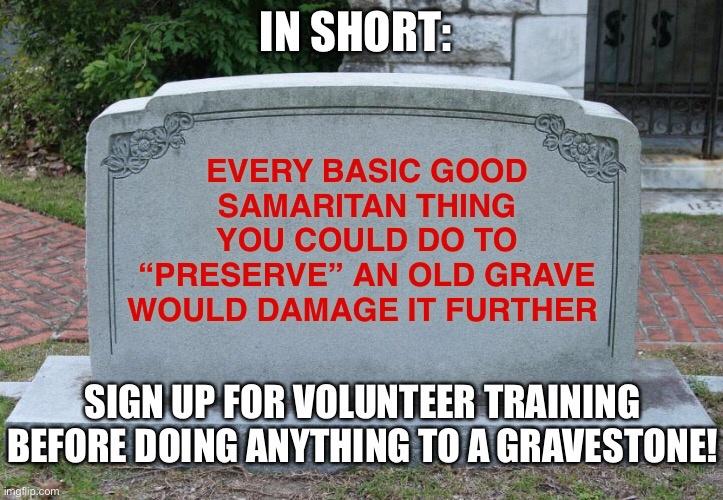
I know you mean well, and it’s awesome that you want to put some loving care into something old and exposed to the elements.
But cleaning a gravestone is a historical preservation procedure. Most city graveyard committees will have volunteer opportunities where you can get real training in handling a delicate headstone.
But until then, the best thing you can do for an old gravestone is to do NOTHING to the stone! But weeding around it isn’t going to hurt it. As long as you DON’T TOUCH THE STONE!!
Don’t let this discourage you, though. You can have an awesome time cleaning headstones as soon as you get real training in it!
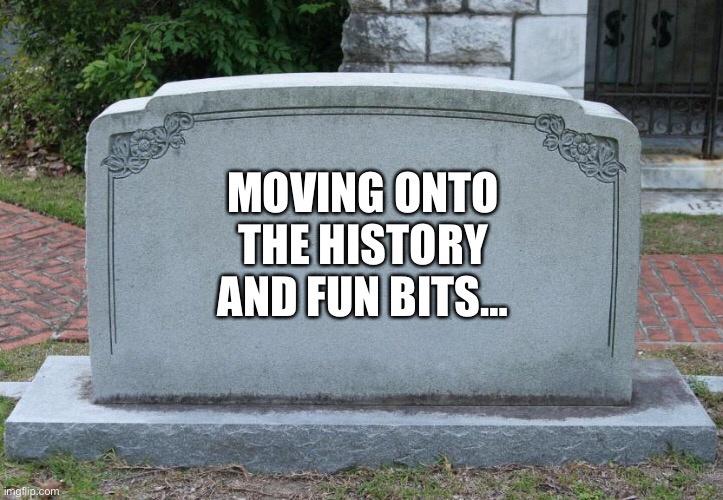
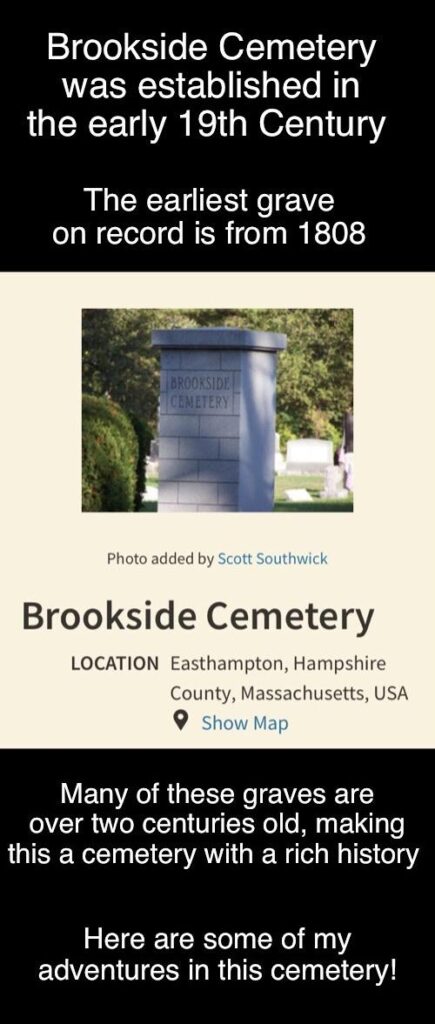
I have been looking for that first grave for a while, but I haven’t found it yet. I will definitely share a picture when I do!
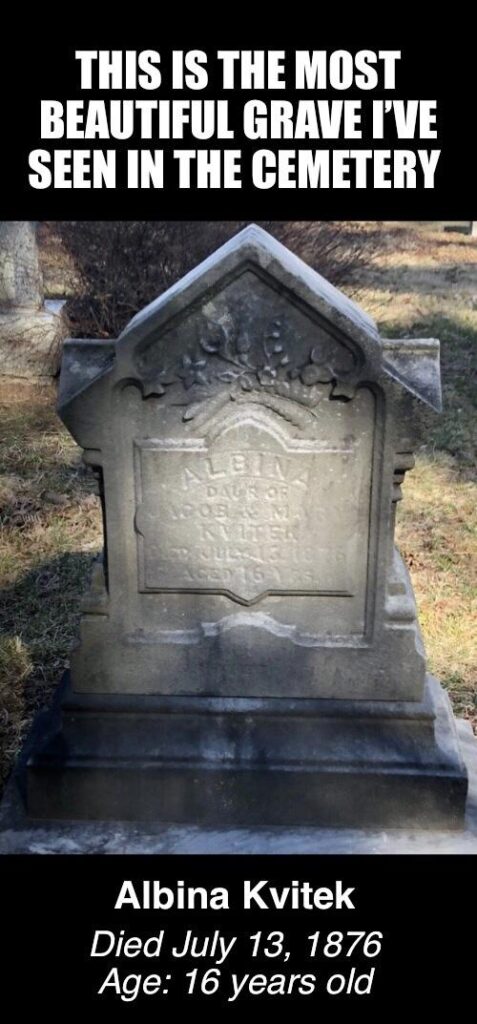
The craftsmanship is phenomenal. Everything about it is gorgeous. I especially love the floral designs above it, and the way that the slanted sides of the stone make small “eaves” for it.
Whoever Albina was, she was clearly very loved.
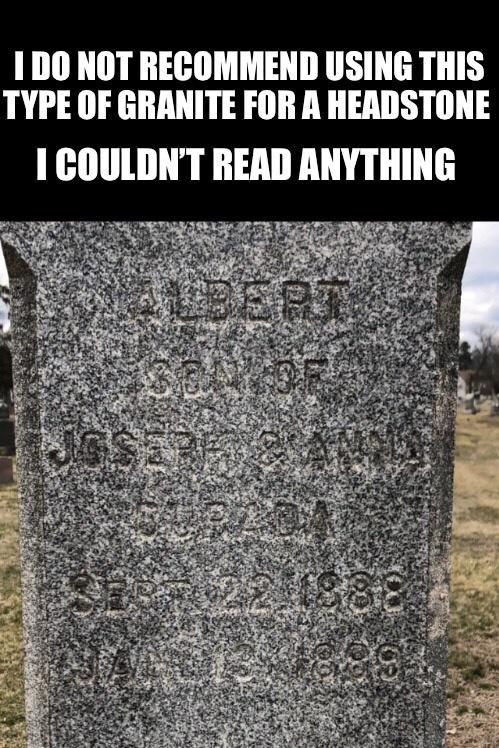
I’ve seen many 19th Century headstones with this material, and it makes me want to scream. Something about this type of stone makes it more resistant to aging, but it might as well BE a badly weathered grave
BECAUSE YOU STILL CAN’T READ IT.
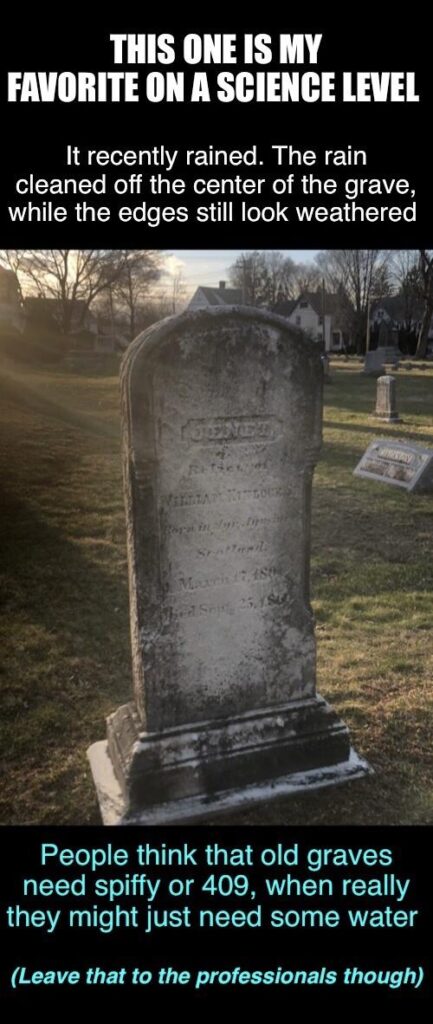
There were plethoras of gravestones that looked half-cleaned off, simply because it rained. Sometimes all an old gravestone needs, is a bath.

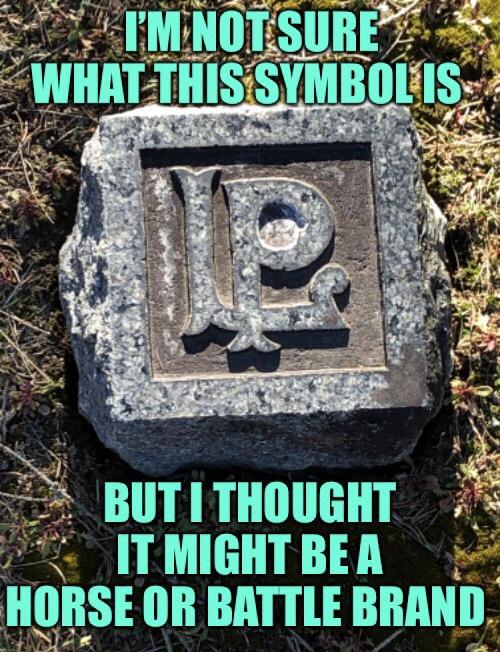
I was also born and raised in Texas, so that might not apply in Massachusetts. Brands are a bigger deal where I’m from.
My grandfather’s cattle brand was L-7. My immediate family doesn’t have one, as we aren’t farmers or ranchers. Our family friend’s cattle brand is a tumbling R with a lazy J.
As far as Texas goes, cattle and horse brands began in 1877 by a group of ranchers that wanted to reduce cattle theft. The idea was to create a brand that signified who’s animal belonged to whom. These brands were then registered into a government clerk (just like a marriage license).
This meant that the branded animal could be traced back to its rightful owner if it were to be stolen, or wander away from home (escaping cows happen).
In fact, it’s still used today. In Texas, you don’t HAVE to brand your animals. But if you DO brand them, you are legally required to register the brand into the government register (or whatever you call it).
Cattle brands in Texas are considered “family crests” of sorts, so I could see a situation where someone puts their brand onto their headstone when they pass.
The elaborateness of this symbol made me think of a cattle brand, and I wondered if this was a “family crest” in some way.
Then again, I’m Texan, and this is Massachusetts.
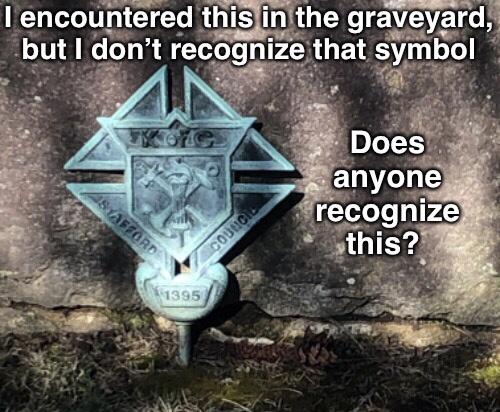
This looked like one of those veterans monuments/plaques next to veteran graves… but I don’t recognize this from any battle.
I looked up “Stafford Council,” and learned it’s a city hall. Is this a sheriff? A police officer? I’m not sure, hence why I’m asking.
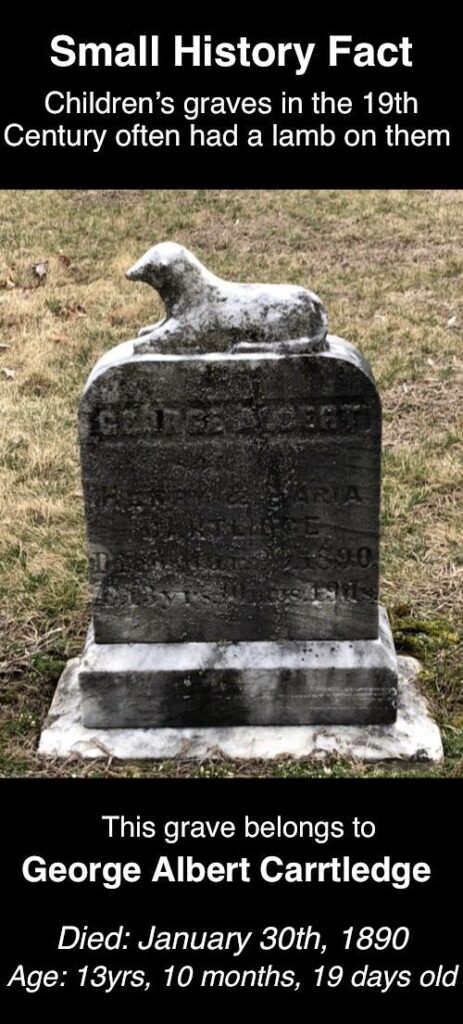
This is definitely sad, but it’s also an interesting look into 19th Century cultural customs.

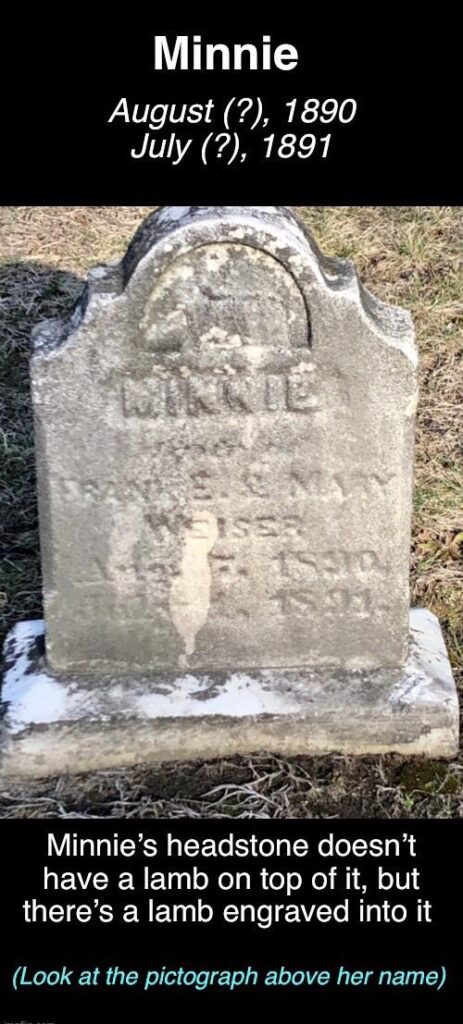

There are currently 4,580 memorials in Find A Grave, at least. I suspect that at least 2,000 of those are child graves, considering the history of this town and cemetery. Life was deadly before vaccines. That’s why doctors made vaccines. That’s all I’m going to say.
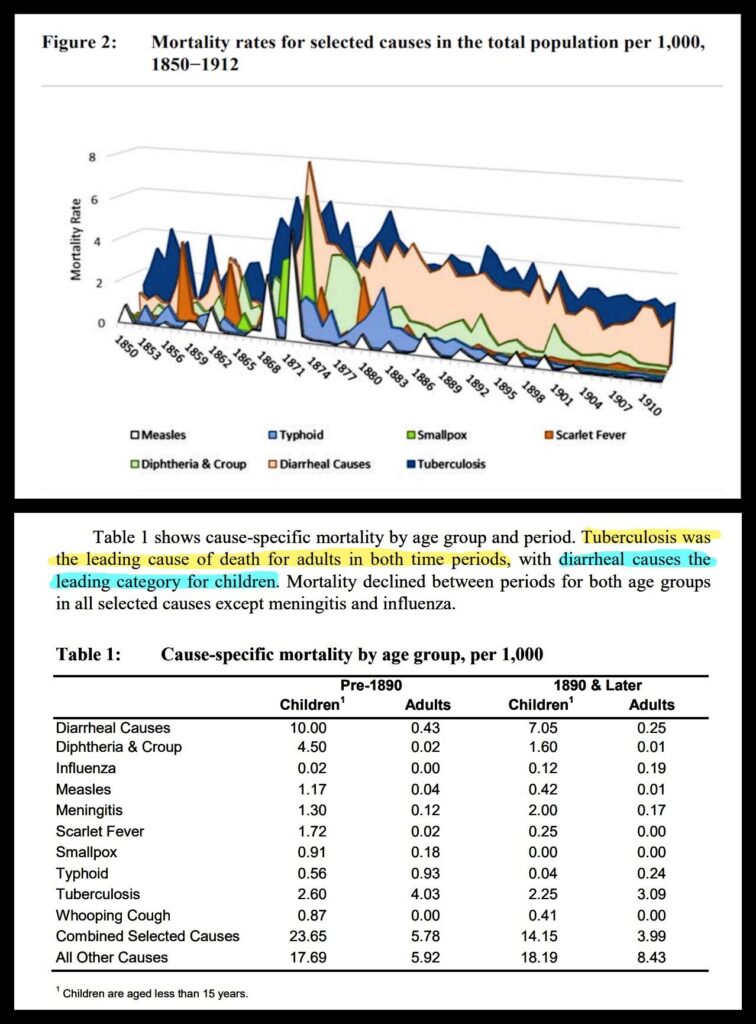
This is a graph of disease mortalities in the Holyoke/Easthampton area. Whatever was highest in the graph on the year that they died is probably what killed them.
Side note: “diarrheal causes” refers to cholera and dysentery.
.
Source of graph: https://www.demographic-research.org/volumes/vol33/36/33-36.pdf
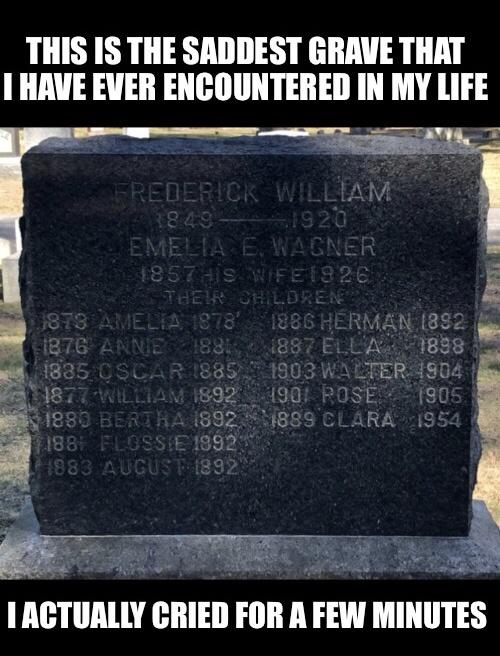
Imagine having 12 children, and only one of them lives to reach adulthood. They buried eleven of their babies, and only one of their children outlived them.
That’s just horrifying and heartbreaking, no matter what era you come from.
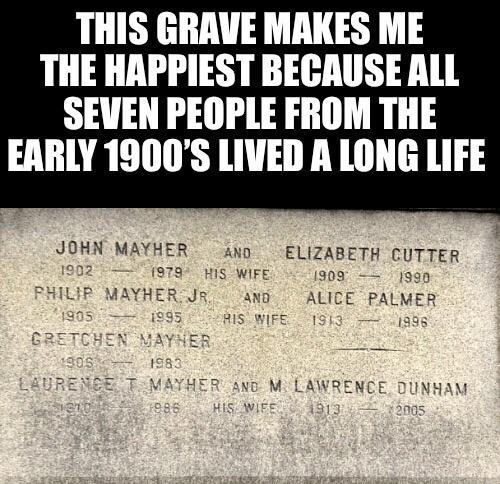
Whenever I get sad by all the death, and the overgrown graves that I’m prying from the ground, I come back to this headstone.
Seven people were born in one of the most lethal times in history – where every lethal disease still raged without a vaccine, and the 1918 influenza pandemic was on its way. They all survived, and lived long lives.
Not everyone dies too soon. It’s comforting in its own way.
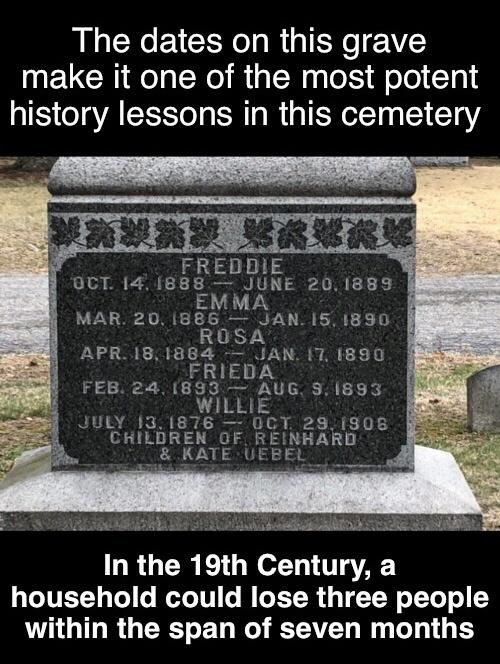
This is my favorite historical grave, as dark as that is. It’s not that I’m happy that three children died within seven months of each other, but the meticulous dates show just how fast the 19th century could kill off a household.
It’s the ugly side of history on display, in a way that can’t be argued away with pseudoscience and propaganda.
In seven months, three children died. The fourth child was another infant who succumbed to mortality, like most infants did back then. The days before modern medicine had a high mortality rate. You were lucky to live to be 30.
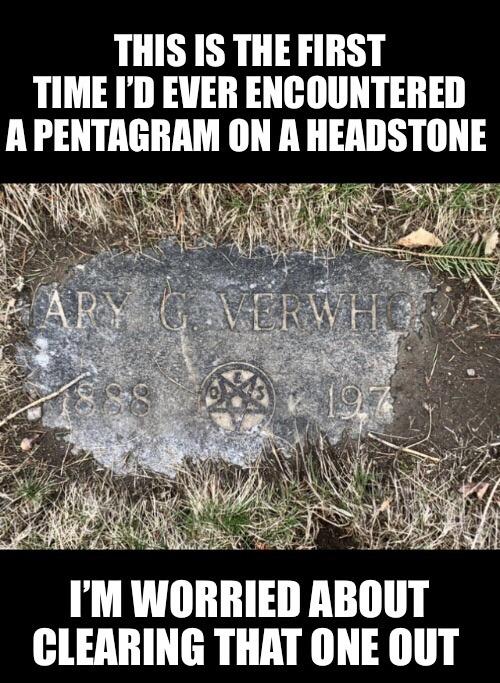
EDIT: Turns out it’s a free mason symbol. Never mind!
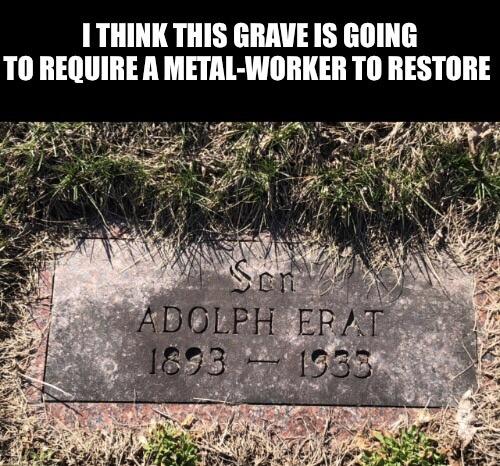
I have been through many old graveyards, and I had never seen one like this. It’s a sheet of metal. I think it’s iron, but don’t quote me on that. It’s damaged some. In person, you can see parts where the engraving sort of “fell through.”
This did not seem like a practical headstone, and I think it’s going to take a highly skilled welder to restore this one.
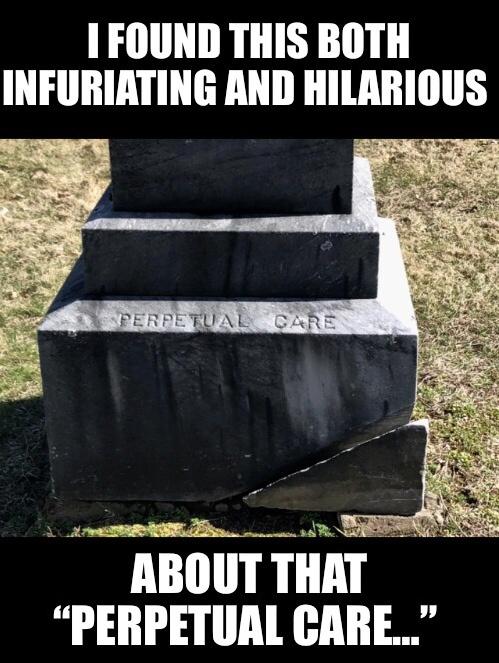
“Perpetual care.”
So interesting! A garden of life stories.